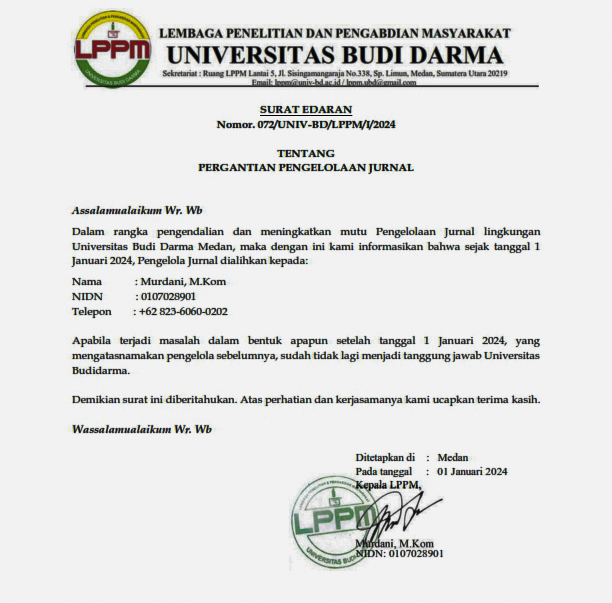Analisis Sistem Pendukung Keputusan Dalam Rekomendasi Kenaikan Pangkat PNS Menggunakan Kombinasi Metode TOPSIS dan SAW
DOI:
https://doi.org/10.30865/json.v4i2.4471Keywords:
Promotion, Decision Support System, TOPSIS, SAW, Civil ServantAbstract
PNS promotion is an award given to Civil Servants who have met the specified requirements as well as for work performance and service to the country. a Civil Servant is required to continue to be able to apply for promotions periodically to the highest level, so that within a certain period of time every civil servant gets the opportunity to apply for promotions. Similar to the scope of the East Kotawaringin Regional Secretariat, civil servants have the right to apply for a promotion every 4 years. The Staffing of the Regional Secretariat of the Kotim has difficulties in selecting the file for promotion proposals because of the large number of employees who propose promotions and the files and provisions gathered by civil servants must be managed immediately so that they are submitted to the BKPSDM. Researchers offer a decision support system with TOPSIS and SAW methods. The combination of the two methods serves to produce optimal decisions in accordance with predetermined criteria. This study uses 5 alternatives and 4 criteria. In this study, the alternatives consisted of Kurniawan Wibowo, Idris Sugiono, Nuringsih Sujati, Meuthia Rakhmasari, and Maulana. Of the five alternatives, those with the highest final score were Idris Sugiono, Nuringsih Sujati and Meuthia Rakhmasari with a value of 0.427 or 42.7%.
References
BIRO KEPEGAWAIAN, “Kenaikan Pangkat PNS,†setjen.pu.go.id, 2020. https://setjen.pu.go.id/bko/subtema/kenaikan-pangkat-pegawain-negeri-sipil (accessed May 20, 2022).
P. A. W. Santiary, P. I. Ciptayani, N. G. A. P. H. Saptarini, and I. K. Swardika, “Jurnal Pengertian Topsis,†vol. 5, no. 5, pp. 621–628, 2018, doi: 10.25126/jtiik2018551120.
H. Hertyana et al., “Sistem Pendukung Keputusan Pemilihan Laptop Dengan Menggunakan Metode Topsis,†vol. 06, pp. 36–44, 2021.
M. Parida, M. R. Yuansyah, D. Konteks, and P. N. Sipil, “SISTEM PENDUKUNG KEPUTUSAN KELAYAKAN KENAIKAN PANGKAT JABATAN FUNGSIONAL ( ASN ) METODE TOPSIS,†no. 1, pp. 89–96, 2022.
F. Zulfikar, R. Rosnelly, and N. E. Saragih, “Sistem Penunjang Keputusan Kenaikan Jabatan Karyawan Dengan Metode SAW Pada Yayasan Islamic Center Medan,†Knsi 2018, pp. 1152–1157, 2018.
S. Rismayanti, S. Adi Wibowo, and Y. Agus Pranoto, “Implementasi Kombinasi Metode Saw Dan Topsis Untuk Seleksi Beasiswa Kartu Indonesia Pintar,†JATI (Jurnal Mhs. Tek. Inform., vol. 5, no. 1, pp. 349–356, 2021, doi: 10.36040/jati.v5i1.3288.
Agus Perdana Windarto, “Implementasi Metode Topsis Dan Saw Dalam Memberikan Reward Pelanggan,†Klik - Kumpul. J. Ilmu Komput., vol. 04, no. 1, pp. 88–101, 2017.
A. Perbandingan, M. Saw, and D. A. N. Topsis, “DOSEN STMIK PALANGKARAYA,†pp. 126–137.
F. Rachman and A. F. Daru, “Aplikasi Sistem Pendukung Keputusan Penilaian Karyawan Pada Pt Ga Tiga Belas Dengan Metode Simple Additive Weighting( Application the Support System Decision Assessment Employees At Pt Ga Tiga Belas With the Methods Simple Additive Weighting ),†J. Pengemb. Rekayasa dan …, vol. 17, no. 1, pp. 24–30, 2021, [Online]. Available: https://journals.usm.ac.id/index.php/jprt/article/view/3636.
C. Surya, “Penilaian Kinerja Dosen Menggunakan Metode TOPSIS (Studi Kasus : Amik Mitra Gama),†J. RESTI (Rekayasa Sist. dan Teknol. Informasi), vol. 2, no. 1, pp. 322–329, 2018, doi: 10.29207/resti.v2i1.119.
T. A. Kurniawan, “PEMODELAN USE CASE ( UML ): EVALUASI TERHADAP BEBERAPA KESALAHAN DALAM PRAKTIK USE CASE ( UML ) MODELING : EVALUATION ON SOME PITFALLS IN PRACTICES,†vol. 5, no. 1, pp. 77–86, 2018.
Downloads
Published
How to Cite
Issue
Section
License

This work is licensed under a Creative Commons Attribution 4.0 International License
Authors who publish with this journal agree to the following terms:
- Authors retain copyright and grant the journal right of first publication with the work simultaneously licensed under Creative Commons Attribution 4.0 International License that allows others to share the work with an acknowledgment of the work's authorship and initial publication in this journal.
- Authors are able to enter into separate, additional contractual arrangements for the non-exclusive distribution of the journal's published version of the work (e.g., post it to an institutional repository or publish it in a book), with an acknowledgment of its initial publication in this journal.
- Authors are permitted and encouraged to post their work online (e.g., in institutional repositories or on their website) prior to and during the submission process, as it can lead to productive exchanges, as well as earlier and greater citation of published work (Refer to The Effect of Open Access).





